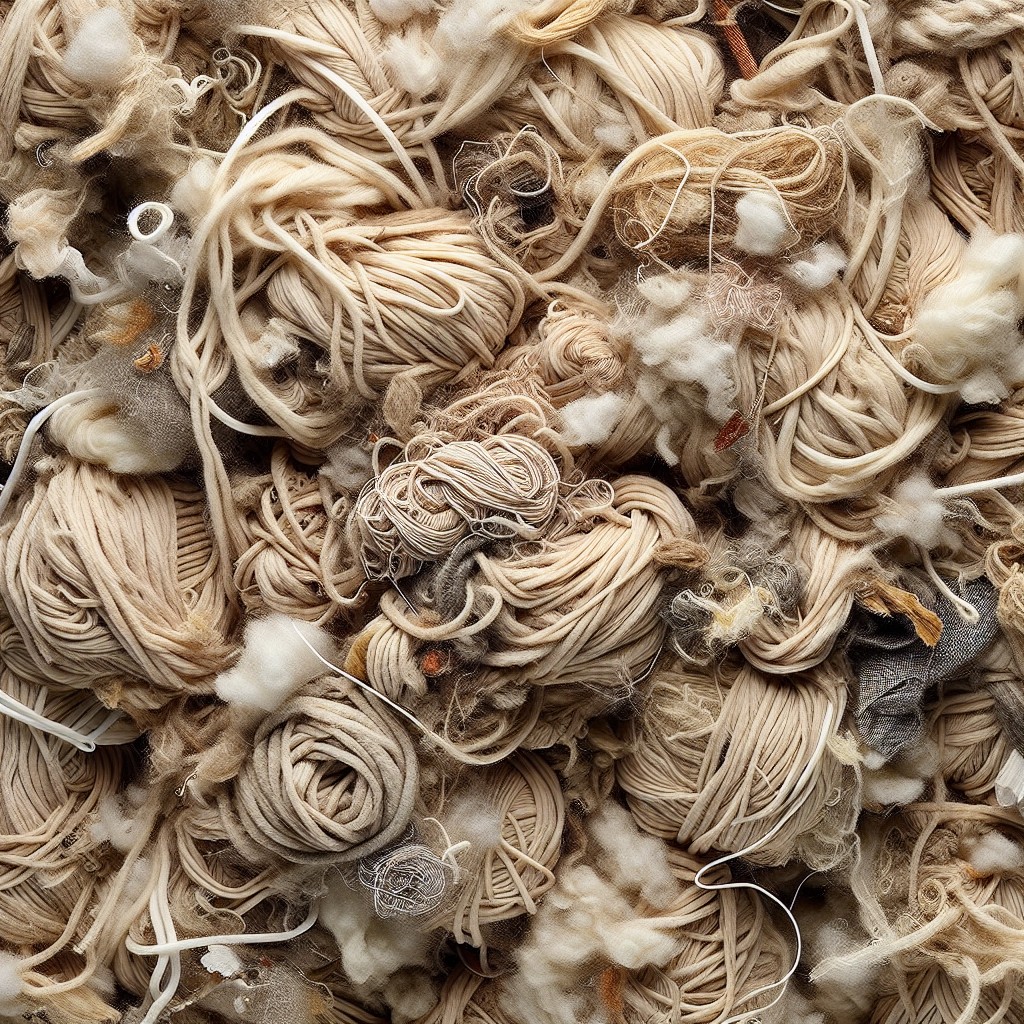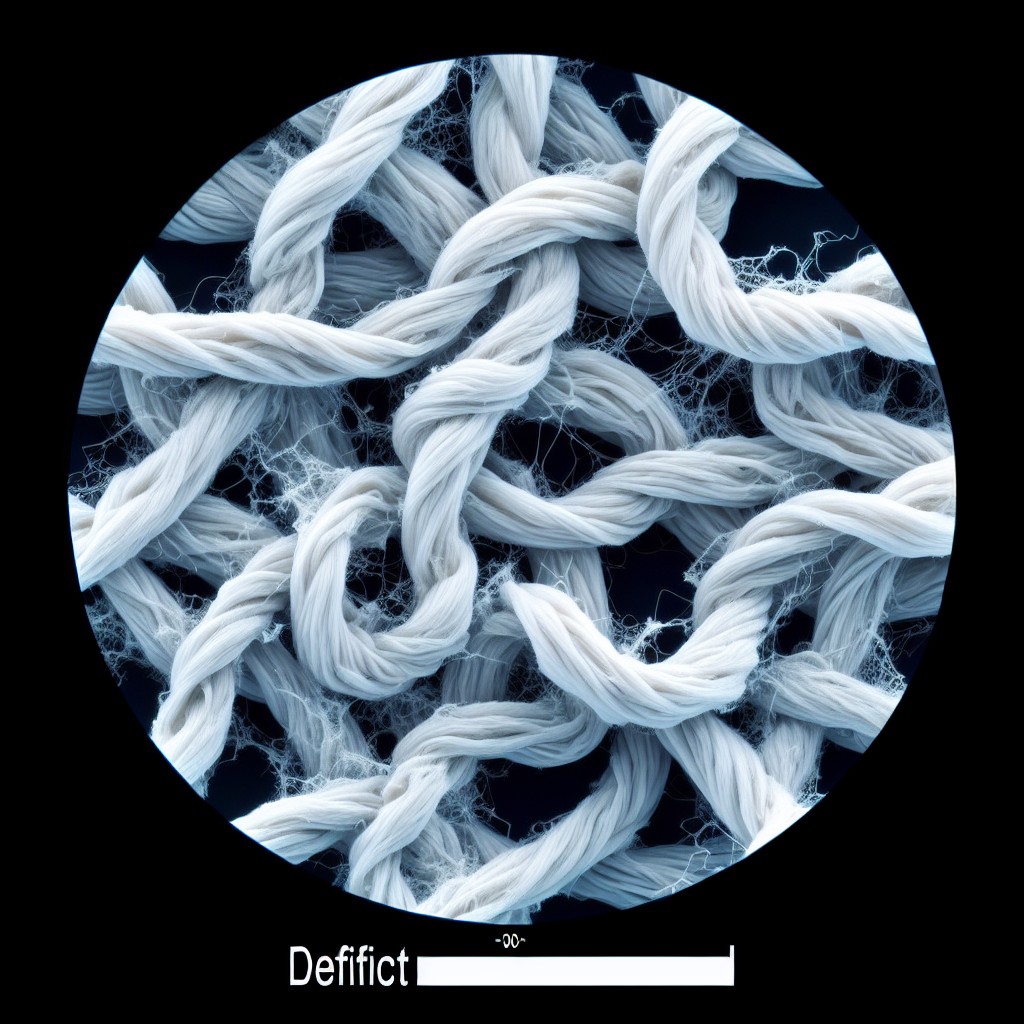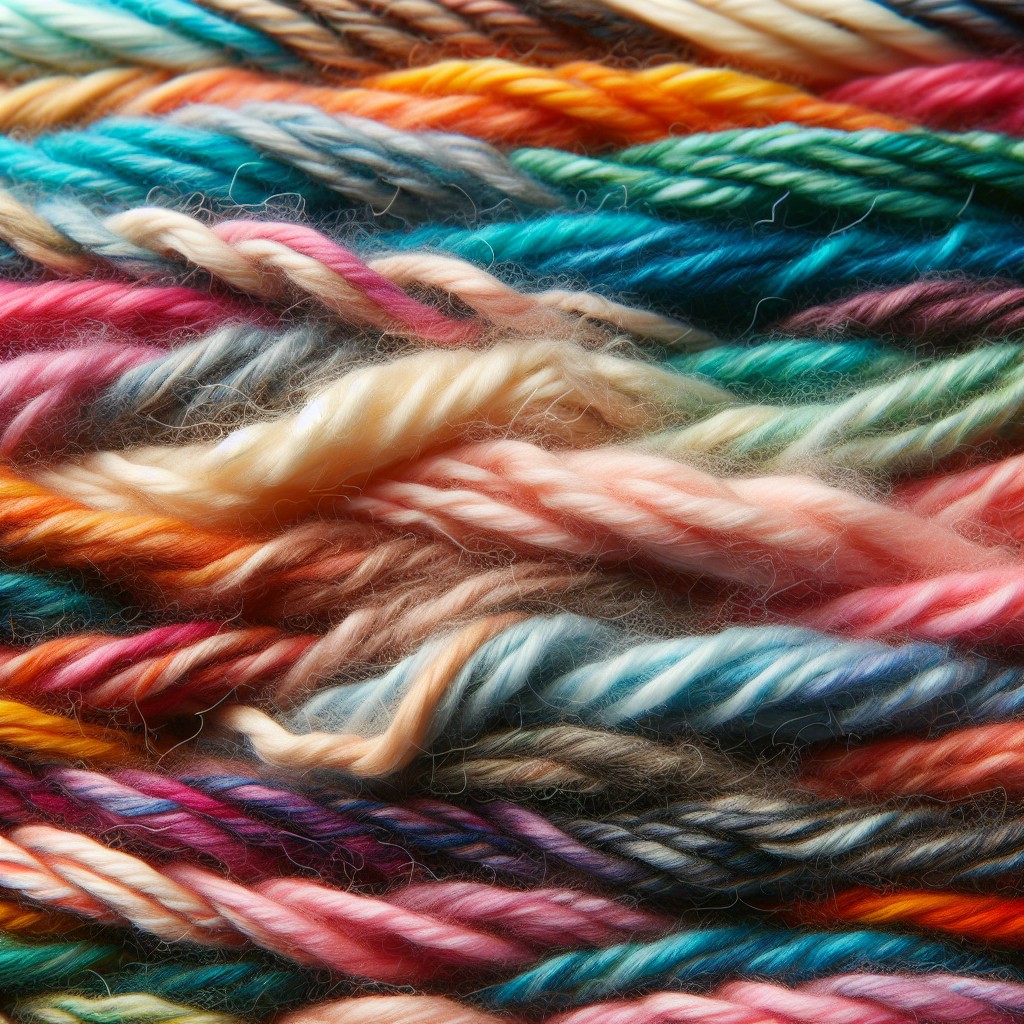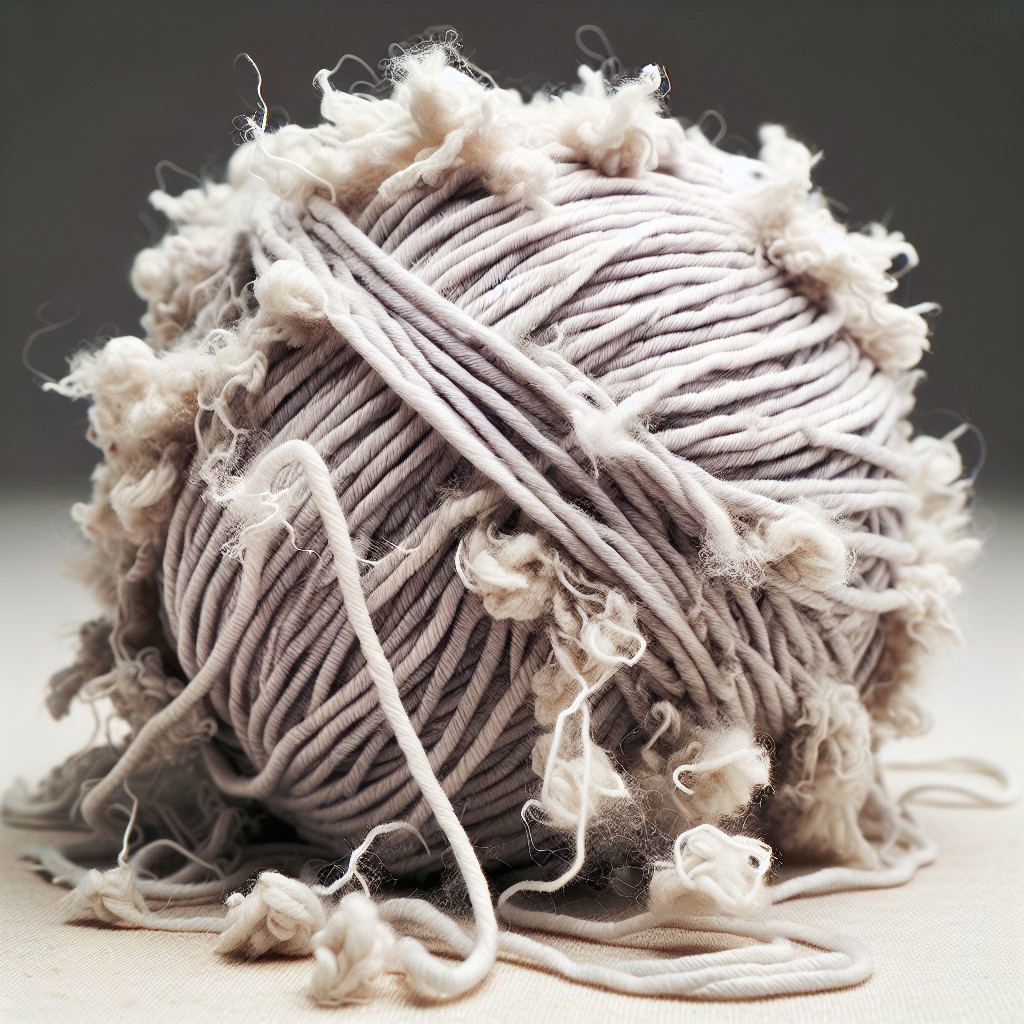You’ll want to read on because unraveling the mysteries of Bad Sheep Yarn can take your knitting and crochet projects to a whole new level of creativity and unique design.
Bad Sheep Yarn is a perfect choice for craft enthusiasts in search of high-quality, ethically-sourced wool. The brand’s unique appeal lies in its commitment to supporting small farms and ensuring the welfare of the sheep providing the wool.
But that’s not all! They offer a stunning variety of yarn weights and colorways, proving to be a treasure trove for knitters and crocheters alike.
Whether you’re planning your next crochet masterpiece or knitting a comfy winter sweater, Bad Sheep Yarn can cater to your creative needs.
As we unveil the details, you’ll discover why this yarn is adored by the crafting community and how it can contribute to your handcrafted projects.
Key takeaways:
- Weak fibers: Inadequate nutrition or health issues affect strength.
- Irritating to skin: Pollution or additives in processing cause irritation.
- Color inconsistencies: Uneven color dispersion affects shade uniformity.
- Uneven thickness: Changes in thickness affect crafting.
- Yarn breakage: Poor fiber quality or processing techniques cause breakage.
Understanding the Basics of Bad Sheep Yarn

Sheep yarn quality can be influenced by numerous factors such as the breed of the sheep, the rearing conditions, and processing techniques. Bad sheep yarn typically has faults that are readily detectable and which inhibit its best use.
1. Weak Fibers: This can be due to inadequate nutrition, illness, or stress in the sheep. Underlying health issues can affect the strength of the yarn.
2. Irritating to Skin: Sometimes, bad sheep yarn may cause irritations or allergies. This is likely due to pollution in the processing facilities, or the use of chemical dyes and additives.
3. Color Inconsistencies: The yarn may present uneven color dispersion, with light and dark spots that break the uniformity of the shade.
4. Uneven Thickness: Ideal yarn should have regular thickness. Changes in thickness can cause problems during crafting.
5. Yarn Breakage: If the yarn breaks easily, this could indicate poor fiber quality or shoddy processing techniques.
Remember, yarn quality can significantly impact your crocheting and knitting projects. Hence, it’s crucial to pay attention to these signs.
Detection of Faults in Bad Sheep Yarn

Detecting faults in yarn mainly involves a keen observation of texture and a subtle assessment of strength. Look at the yarn closely: the fibers should be uniformly spun and tightly held together. Uneven or loosely spun fibers, where some areas of the yarn appear thicker than others, signify poor quality.
Faults can reveal themselves in the form of weak spots. Test the yarn’s strength by gently pulling on it before starting your project. However, don’t attempt to break it; a slight but firm tug should do. If the yarn breaks easily, it was likely not twisted tightly enough during production.
Notice if there’s a difference in the color’s intensity. It could mean the dye was not properly absorbed or that non-colorfast dyes were used.
Lastly, excessive shedding or pilling is a clear sign of bad sheep yarn. A small amount is normal, but if your yarn leaves behind a noticeable amount of fuzz, you’re dealing with poor quality.
In a nutshell, adept observation of the yarn surface and smart color and strength tests can guide you in early fault detection.
Color Inconsistencies in Bad Sheep Yarn

Variations in hue might seem like a creative spin-off, but when it comes to yarn, they hint at an underlying issue. Unexpected and abrupt color transitions can often relate back to ill-managed dyeing processes, which eventually categorize the yarn as “bad.” Such inconsistencies not only hinder the visual appeal but also affect the overall quality of the yarn.
During dyeing, the inconsistency may arise due to uneven soaking, improper dye application, or hasty drying procedures. It’s paramount for each strand to get its fair share of color for uniformity. This method aids in maintaining the quality of the crochet or knitting projects, and anything less leads to the yarn’s downgrade.
Rapid color fading is another sign of poor quality. If the vibrancy of the yarn diminishes after a wash or two, the dye’s binding with the fibers was not up to par. Therefore, it’s beneficial to put some thought into the dyeing process when assessing the quality of the sheep yarn.
Effect of Bad Sheep Yarn On Crocheting and Knitting Projects

When utilizing bad sheep yarn in crochet or knitting projects, various issues may arise that could adversely affect the final result. Unraveling or breakage, which often results from poor yarn quality, can disrupt the continuity of your work, causing frustration and potential delays.
Color inconsistencies are another aspect to be wary of. These can result in unappealing variations in the finished product’s aesthetic appeal if the dye job of the yarn is uneven or the color bleeds during washing.
Further, using bad sheep yarn can lead to finished items having a rough or scratchy feel, instead of the sought-after soft and warm qualities appreciated in crocheted or knitted goods. This is due to subpar fibers, which can also trigger allergies in sensitive individuals.
Lastly, working with low-quality yarn, which may have irregular thickness, can cause uneven knitting tension. This could ultimately affect the symmetry and shape stability of your crafted item.
Knowing these potential pitfalls, it pays to be extra vigilant when inspecting your sheep yarn before launching into a significant crochet or knitting project.
Impact of Poor Quality Control On Sheep Yarn Production
Quality control plays a pivotal role in sheep yarn production. An inadequately monitored process could lead to inferior yarn quality with inconsistencies in texture and thickness. This might occur due to hasty manufacturing processes or the use of substandard raw wool, leading to a coarse, weak yarn that is prone to fraying or breaking.
In addition, inconsistencies in the dyeing process might result in uneven coloration. These issues are often magnified during the crocheting or knitting, causing frustrations due to frequent thread breakage or color mismatched patches in your craft.
Furthermore, proper quality control ensures that the sheep are being ethically and healthily raised. Unhealthy or stressed sheep tend to produce brittle and uneven fleece, which further affects the quality of the yarn.
Enhancing the quality control mechanisms in sheep yarn production has numerous advantages. Not only it mitigates production errors, but it also ensures customer satisfaction, improved product longevity, and a more enjoyable crafting experience.
How to Manage Projects With Bad Sheep Yarn
When faced with lower quality sheep yarn, there are several strategies you can employ to produce a decent final product.
1. Double Up: Use two strands instead of one. This strengthens the overall product and can help disguise the weak spots in the yarn.
2. Use Smaller Stitches: Smaller stitches are less likely to unravel or break. Choose a small-sized crochet hook or knitting needles for this technique.
3. Mix and Match: Pair the lower quality yarn with a higher quality one. You’ll enhance the overall strength, and create an interesting pattern at the same time.
4. Pick the Right Project: Some projects like rugs or outdoor wear can handle lesser quality yarn. Avoid using it in projects where strength and durability are a priority, such as garments or stuffed toys.
5. Regular Inspection: Keep a keen eye on your project. If you notice a potential weak point, reinforce it immediately or work around it.
Remember that every challenge also presents opportunites for innovation and creativity. Bad sheep yarn may not be ideal, but with the right strategies, you can still create a beautiful, functional piece. So unleash your creativity and don’t be scared to experiment.
Mitigating Tactics When Using Bad Sheep Yarn
While handling lower quality sheep yarn, the first effective strategy is patience. The yarn may break or fray, but brisk, measured movements can reduce these risks. Yarn conditioners, available in most craft stores, can also be applied to strengthen the fibers.
Second, using larger crochet hooks or knitting needles can ease the stress on the yarn, lowering the chances of breakages. Similarly, looser stitches tend to be more accommodating to weaker yarns.
Lastly, consider blending the bad sheep yarn with a stronger, higher-quality yarn. This not only fortifies the overall strength but also gives a unique textural appeal to these blended projects. Keep in mind, however, to choose a yarn of similar weight and fiber to maintain a cohesive look and feel. Pairing these mitigating tactics with careful handling and creativity can positively transform the experience with bad sheep yarn.
Little-Known Signs of Bad Sheep Yarn
Firstly, you might notice a variation in yarn thickness. True, no skein is perfect, but a quality one should have minimal thickness changes throughout, ensuring uniformity in projects. Beware when your yarn alternates between thick and thin, indicating possible faulty production.
Secondly, knots or joins inside the skein. Encountering a knot or two in a skein doesn’t signify a bad yarn, but excessive knotting signifies lower quality yarn with potential issues during the knitting or crocheting process.
Thirdly, is the pilling of the yarn. While all yarns may pill over time due to constant friction, excessive pilling even before launching your project could indicate a lower quality yarn.
Moreover, examine the twist of the yarn. Well-spun yarns will have a firm, balanced twist, while poor quality yarns may feel loose and unsteady, which affects both their durability and appearance in projects.
Lastly, look out for shedding. Yarns that shed excessively could indicate poor processing methods leading to loose, unstable fibers. Frequent shedding poses a problem as it could result in a final project that looks worn-out prematurely.
Recognizing these signs early can help you prevent potential issues during your crafting, ensuring a smoother process and a higher quality outcome.
How Bad Sheep Yarn Affects Final Craft Outcome
To appreciate the impact of subpar yarn, it’s crucial to understand the key factors underpinning a successful crochet or knitting project – these include consistency, tension, surface quality, and longevity.
Firstly, bad sheep yarn tends to have irregular thickness, which could lead to inconsistent stitches and uneven finished pieces. This inconsistency may also disrupt your rhythm, causing you to adjust tension frequently, which could affect the product’s overall look and feel.
Secondly, if you’re using poor quality yarn, your finished project might have a rough or scratchy surface quality. Good quality sheep yarn creates a smooth, soft fabric making it comfortable to the touch, but bad quality yarn lacks this comforting attribute.
Lastly, longevity matters in crafting. Using bad sheep yarn could compromise the durability of your project. It may not stand up to frequent use or washing, causing it to pill, shed, or even unravel.
In conclusion, bad sheep yarn can significantly affect the quality, appearance, and durability of your finished projects. Understanding these impacts can help crafters make informed decisions about the yarn they use.
Importance of Good Quality Yarn in Crafting
Crafting with superior yarn takes your projects to a whole new level, enhancing durability, texture, appearance, and longevity.
1. Ease of Work: High-quality yarn is typically easier to work with, as it doesn’t break or snag easily, making the crafting process more enjoyable and efficient.
2. Superior Finish: Quality wool ensures a smoother, more uniform output. Its excellent stitch definition improves the overall visual appeal of the finished project.
3. Durability: Projects created with good yarn are more resistant to wear and tear. They hold their beauty and function well over time, even with regular use.
4. Comfort: Quality yarn also ensures comfort. Whether it’s an intricate crochet piece or a simple knit scarf, good yarn guarantees a soft, comfortable touch, making it ideal for wearables.
5. Color Retention: Quality fibers assure that your project will retain its vibrant color even after numerous washes, ensuring it stays visually pleasing for years.
Regardless of your crafting project, good quality yarn is absolutely worth the investment. The results are distinctly superior, adding charm and durability to your masterpieces.
Dealing With Yarn Breakage and Weak Fibers
When encountering broken strands or feeble fibers, practicing patience is paramount. Instead of pulling and adding strain, gently tease the two ends apart. Should the yarn break mid-project, seamlessly splice it together. One method is felting, applicable to fibers like wool and alpaca. Wet the ends of your yarn, overlap them, and apply friction by quickly rolling them between your palms.
If using synthetic or non-feltable fibers, consider the Russian join technique. Thread each yarn end onto a sewing needle, form a loop, and sew back through the yarn – effectively creating an interlocking join with no ends to weave in later.
Regardless, always keep sharp scissors nearby to trim frayed edges and promote neatness in your handiwork.
Remember not to cut corners when it comes to yarn quality. However, if bad sheep yarn is all that is available, these tips will undoubtedly help navigate the tricky path of breakage and brittleness.
Impact of Bad Sheep Yarn On Allergic Reactions
It’s crucial to consider that substandard yarn can increase the risk of developing allergies. Proteins found in sheep wool can act as allergens, but the chances of a reaction are higher when the wool is of poor quality. The allergenic potential could be enhanced due to the presence of residues such as dirt and grease, which are often not properly removed in bad yarns.
Moreover, bad yarn might not undergo rigorous cleaning and sanitization process. This can lead to a higher concentration of potential irritants. It is usually dust, dander, or other minute particles that provoke allergic reactions, causing symptoms like itchiness, redness, and swellings, which can seriously disturb your crafting experience.
To safeguard your health, always opt for yarns produced with high-quality standards. Look for guarantees that the yarn has been cleaned and processed thoroughly, reducing the risk of allergens.
Remember, when you notice allergic reactions during or after working with yarn, it’s important to consult with a medical professional. Meanwhile, discontinuing the use of the suspected yarn can help alleviate symptoms.
Influence of Sheep’s Health and Diet On Yarn Quality
Sheep nourishment plays a critical role in the quality of the wool produced. A diet rich in nutrients and wholesome feed creates more substantial fiber strength, impacting yarn durability positively. Conversely, a sheep’s inadequate diet leads to weak fibers, resulting in bad sheep yarn.
In terms of health, sheep suffering from diseases or physical distress will produce coarse, brittle wool. This degraded quality translates into yarn that is both harder to work with and less durable. Regular health checks and vaccinations play a crucial part in maintaining the overall wool quality.
Finally, the sheep’s living conditions fall under both the diet and health categories. Good living conditions reduce stress on the animal, while poor ones can lead to both dietary and health issues, directly affecting the wool’s quality.
Understanding these points will allow you to factor in the significance of sheep’s health and diet in relation to yarn quality. This awareness can guide you in choosing the best quality yarn for your crafting projects.
Role of Ethical Practices in Sheep Yarn Production
Practicing ethical treatment of sheep plays a significant role in yarn production, directly influencing the product’s quality. Sheep that are responsible for producing high-quality wool require a well-managed environment.
Firstly, ethical shearing limits stress on sheep, subsequently aiding in producing finer wool. Skilled shearers also ensure the process occurs free from harm or injury to the sheep.
Secondly, maintaining optimal sheep health holds importance. Regular veterinary checks, providing balanced nutrition, and ensuring a clean habitat gives rise to healthy fleece that’s soft, strong, and better for spinning into yarn.
Thirdly, farmers who practice ethical rearing avoid overgrazing which can degrade land quality leading to malnutrition in sheep and eventually poor-quality wool.
Lastly, fair trade practices offer farmers a decent price for their wool, encouraging better care of the sheep and ultimately improving yarn quality. Thus, ethically produced yarn is not just better for the sheep, but also superior for your crafting experience.
Bad Sheep Yarn Vs. Synthetic Yarn: Differences and Similarities
In comparison, sheep yarn is a natural fiber, whereas synthetic yarns like acrylic and nylon are man-made. A significant difference between the two lies in their warmth factor. Sheep yarn, being derived from animals, naturally provides more warmth, making it a preferred choice for winter crafts. Synthetic yarn, on the other hand, doesn’t have the same insulation properties.
However, synthetic yarns can mimic some properties of natural fibers. They are often more durable, resist moth damage, and are easier to care for than natural fibers, being machine washable and dryable. This can be advantageous for projects requiring frequent washing or for people allergic to animal fibers.
Remarkably though, synthetic and bad sheep yarn share a similarity when it comes to color inconsistency. Just like in bad sheep yarn, synthetic yarn’s color consistency can vary between dye lots, underscoring the importance of buying sufficient yarn from the same batch to complete a project.
It’s also worth noting that both types may affect the texture and drape of your finished craftwork. While synthetic yarn might be smoother and has uniformity, bad sheep yarn can yield a rustic, handcrafted look due to its variations. Ultimately, the choice comes down to the desired end result. Each type serves a distinct purpose and provides different benefits and drawbacks.
Environmental Impacts of Producing Bad Sheep Yarn
When it comes to the environment, producing inferior quality sheep yarn can have several implications. An initial impact is the necessity for more resources. Consider the added water, food, and land needed to maintain sheep for a longer duration to produce the same amount of yarn, due to its subpar yield.
Additionally, there could be a measurable increase in greenhouse gas emissions if production efficiency is low.
Poor-quality sheep yarn also has downstream effects on waste. Unlike high-quality wool, lower-grade yarn is less durable, leading to an increase in discarded knitted or crocheted items that can’t be mended.
Lastly, certain methods employed to cheaply produce more yarn, such as overgrazing and irresponsible farming practices, can lead to land degradation, soil erosion and biodiversity loss. Using ethical and sustainable brands of yarn can help to prevent this.
Choosing the Right Yarn for Your Project
When selecting yarn for any project, there are several key factors to consider in order to achieve the desired result. Firstly, the yarn weight is crucial. It dictates the thickness of your knitted or crocheted fabric, and it is imperative to match it to your pattern. Light, medium, and bulky weights each serve different functions and craft styles.
Secondly, consider the yarn’s fibre content. This affects the texture, warmth, and durability of the final product. For example, wool is perfect for cosy winter items due to its warmth, while cotton yarns are ideal for summer crafts due to their breathable nature.
The yarn’s color and dye lot are equally important too, especially if your project involves multiple skeins. The colors should be consistent to maintain a uniform appearance, and purchasing yarn from the same dye lot helps to ensure this.
Lastly, consider the care instructions for the yarn, as it will influence how you care for the final product. Be sure to choose a type that suits the recipient’s lifestyle, particularly if the finished craft requires delicate care such as hand-washing or dry-cleaning.
Remember, no two projects are the same, and different crafts will require diverse types of yarn. The correct choice not only elevates the final product but also makes the process enjoyable.
Switching From Bad Sheep Yarn to High-Quality Alternatives
Transitioning to a higher-grade yarn can be a game-changer for your crafting projects, offering an array of benefits. Better fiber consistency leads to a smoother crocheting or knitting process, reducing the risk of yarn breakage and resulting in a better overall look and feel.
Here are some points to consider:
- Identifying High-Quality Yarn: High-quality sheep yarn is soft, resilient, and uniform in thickness. This consistency optimizes the crafting process while ensuring the product’s longevity.
- Choosing the Right Yarn for Your Project: Research appropriate yarns for your project. For example, delicate items may require fine, soft wool, while rugged items might benefit from coarser, more durable yarn.
- Availability: High-quality alternatives are readily available both online and in physical stores, making them easy to source for your crafting needs.
- Cost: While these yarns may come with a slightly increased price tag, the benefits such as durability, ease of work, and final product appearance far outweigh the initial expense.
- Environmental and Ethical Concerns: Premium yarns often adhere to higher ethical and environmental standards. Choosing reputed brands that prioritize sustainable practices contributes to animal welfare and environmental conservation.
Remember, quality should never be compromised. Making this switch could transform your work, resulting in more sophisticated, attractive, and lasting creations.
FAQ
Who owns bad sheep yarn?
Bad Sheep Yarn is owned by Marcie.
How is wool processed?
Wool processing involves washing raw wool in biodegradable detergents at 140 degrees, pre-soaking it to loosen grease and dirt, then spinning to remove excess water and dirt, all while in nylon mesh bags to ensure protection of the fibers.
Where does yarn come from?
Yarn is derived from both natural materials like cotton, wool, silk, and cashmere, and synthetic materials such as polyester, nylon, acrylic, and spandex.
What are the primary differences between synthetic and natural yarns?
Synthetic yarns are generally more durable and easy-to-care for than natural yarns, but natural yarns provide more breathability and softness.
How does the breed of sheep affect the quality of wool?
The breed of sheep greatly impacts the quality of wool, with breeds like Merino producing soft, fine threads ideal for high-quality knitting and crocheting, while Coarse Wool Sheep yield larger fiber diameters perfect for rugged items such as rugs or tapestries.
What are the steps involved in dyeing yarn for unique color patterns?
The steps involved in dyeing yarn for unique color patterns include selecting the right type of yarn, soaking it, preparing your dye, applying the dye in creative patterns, setting the dye, then rinsing and drying the yarn.




